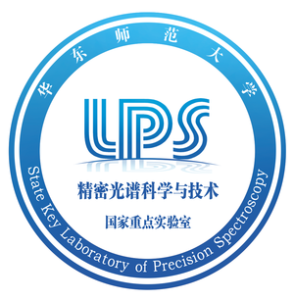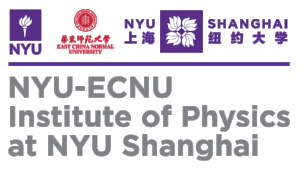Sponsor
With today’s rapid developments in the frontiers of physics, new opportunities and challenges are constantly arising. These occur at both the basic and applied levels. At the basic level, physics provides the foundation of our knowledge of the physical universe. At the same time, new methods and techniques arising from physics research have proved useful in creating new research fields in the biological, social, and engineering sciences. The impact on society from all of these efforts is and will remain profound.
In response to these developments, New York University and East China Normal University together have created the NYU-ECNU Institute of Physics at NYU Shanghai. The Institute’s mission is to build a world-class physics research institute by building on and expanding existing strengths at NYU and ECNU. In addition to fostering US-Chinese scientific collaborations — including a large international component — the Institute combines and leverages the existing strengths of physics research at the three institutions: particle physics and cosmology; hard and soft condensed matter physics; biological physics; atomic, molecular, and optical physics; nanomaterials; and expertise in precision laser spectroscopy and nuclear magnetic resonance.
The Institute features an active visitor program, a regular seminar series, and conferences and workshops. But most importantly, it will actively work to create and strengthen research collaborations among scholars from many different universities and research areas. A central component of its mission is to identify new and exciting theoretical and experimental research directions, especially in the frontier areas of laser spectroscopy, quantum condensed matter, quantum manipulation and information, and precision measurements.
Key Laboratory of Polar Materials and Devices was approved the establishment by Ministry of Education in December 2007, and officially passed the acceptance into the Ministry of Education Key Laboratory of sequence in March 2011, and passed the evaluation of Ministry of Education Key Laboratory in November 2011. Laboratory aims on the strategic needs of country’s information industry and technology development, through the discovery and study of electric charge and spin polarization discipline in the polar materials, then explore the next generation of information processing device technology. The overall goals of laboratory include spin quantum control in semiconductor quantum structure, preparation of high-performance ferroelectric thin film single crystal materials, ferroelectric polarization and thermoelectric conversion law and regulation mechanism, cross application of ferroelectric/ferromagnetic/ semiconductor electronics and photonics, and provide the theoretical basis and technological basis for new features and new concept of optoelectronic functional devices and spintronics devices. There are four main research direction: 1) ferroelectric/multiferroic charge polarization and magnetic coupling laws; 2) electron spin polarization and transportation in narrow band gap semiconductor; 3) spin / charge polarization of optoelectronics; 4) micro/nano oxide polarization electronics and silicon-based integrated devices.
The laboratory consists of 10 experimental platform and computing systems, such as theoretical computer center, polarized materials functional thin film, polarized material molecular beam epitaxy, nano-polarized photoelectron materials, wide-band multi-function system magneto-optical spectroscopy, time-resolved precision spectroscopy, novel imaging spectrometer, strong magnetic field cryogenic electron transport, novel functional polarized material devices, polarized materials and device characterization. Currently there are more than 10 sets of large scientific instruments and equipment, including molecular beam epitaxy (MBE), high vacuum pulsed laser deposition system (PLD), atomic layer deposition system (ALD), magnetron DC / RF sputtering machine, high-performance nano-materials preparation system, plasma-enhanced chemical vapor deposition system, Sol-Gel systems, double-crystal X-ray diffraction analyzer (XRD), UV fluorescence microscopy spectrum tester, vacuum-type Fourier transform infrared spectrometer, automatic ellipsometer, strong optical superconducting magnet temperature measuring system, three-lever laser Raman spectrometer, femtosecond YAG laser system, variable temperature ferroelectric / dielectric testing system, comprehensive physical property measurement system, multifunction atomic force microscopy, piezoelectric scanning probe microscope and micro-nano device processing platform, and the total value is nearly 50 million yuan.
Key Laboratory of Polar Materials and Devices is the key support base by East China Normal University “985” and “211” projects. Laboratory currently has 32 staff, of which 18 are professors, including 1 academician of Chinese academy of sciences, 3 national outstanding youth foundation winner, 5 new-century / cross-century Talents by ministry of education, and initially formed the research team of the academician led, multi-disciplinary background, about 40 years old young researchers as the main backbone, and was selected as the ministry of education innovation team in 2009. Since the establishment of the laboratory, we have assumed more than 30 projects from Ministry of Science and Technology, National Natural Science Foundation of China, Ministry of Education, and other important research from national and Shanghai items. Lab members honored by Shanghai natural science first prize (2103) and the second prize (2012).

State Key Laboratory of Precision Spectroscopy (SKLPS) is a member of the national laboratory system supported by Ministration of Science and Technology of the People’s Republic of China. It is managed by ECNU.
SKLPS is located on Downtown Campus of East China Normal University (Add. 3663 North Zhongshan Road, Shanghai, China), covering a 4000 m2 area of experimental rooms together with a 2500 m2 physical space for offices. Founded in 1986, the laboratory got the name “Open Research Laboratory of Quantum Optics” by the Ministry of Education in 1990. In a period of ten years, it established itself as “Key Laboratory of Optical and Magnetic Resonance Spectroscopy, Ministry of Education.” In 2007, it is authorized to be a state key laboratory by the Ministry of Science & Technology of the People’s Republic of China.
Currently, SKLPS has been developed into a comprehensive scientific research institute with modern optics as the leading orientation, with exploration of significant fundamental science frontiers and development of large engineering techniques and pioneering laser and optoelectronic application as the focal point, and with high-tech innovation and basic research for application as the core mission.
Precision spectroscopy play an important role in improving the ability to explore the laws of nature and to solve the major needs of the country.“The history of physics shows that, when the accuracy of the measurements is improved, new physics may be discovered and explored.”—Nobel Prize Lecture 2005.The improvement on the accuracy of the precision spectroscopy lies in the temporal, spatial and spectral resolution, and detection sensitivity.SKLPS is knowledge-based and target-oriented so as to combine the benefits of a long term generic laboratory culture in the field of precision spectroscopy with the momentum and flexibility of more intensively focused projects of both fundamental and applied relevance. SKLPS has been primarily aiming at research in the spectroscopy with high sensitivity, resolution and precision. Five cornerstone areas of competence have been identified and are now serving as the backbone for projects as follows:
- Precise control of the optical field in time and frequency domain;
- Precision spectroscopy of atoms and molecules;
- Ultra-sensitive spectroscopy;
- Cross-study of precision spectroscopy with other research fields;
- Frontier theoretical study of precision spectroscopy.

